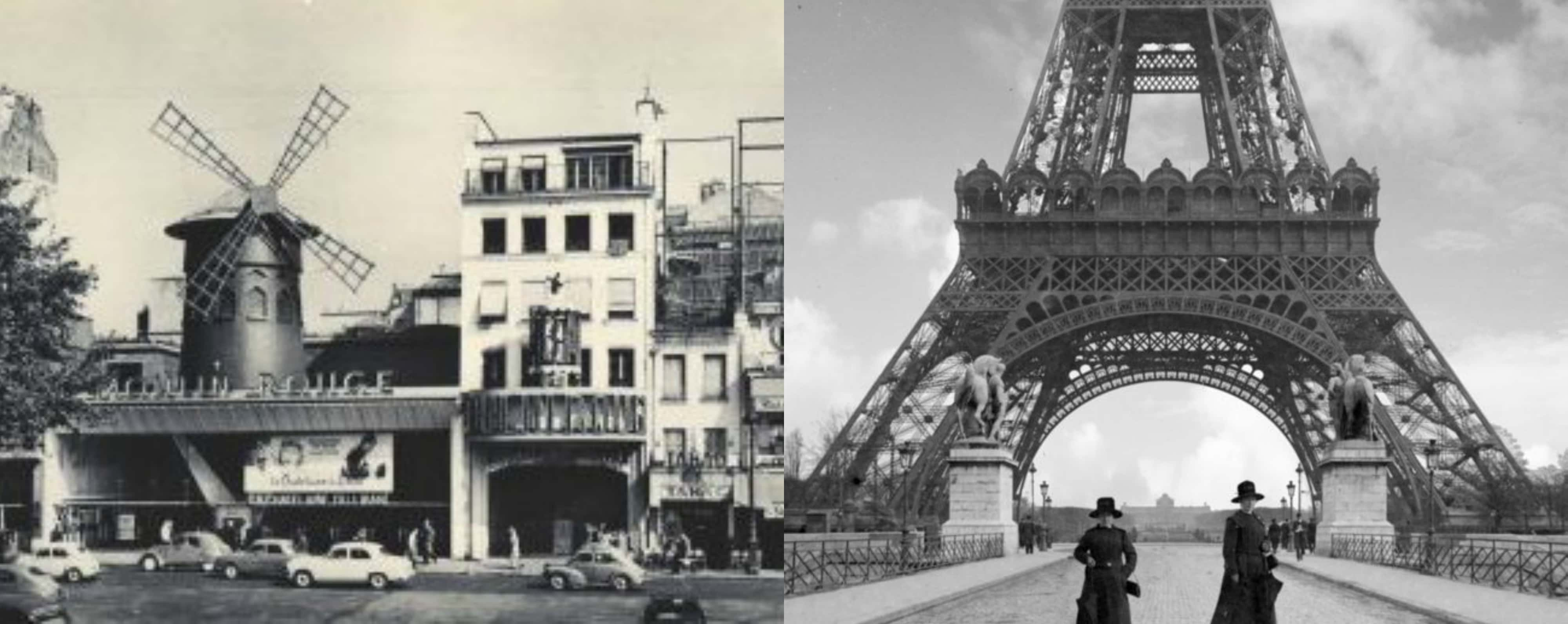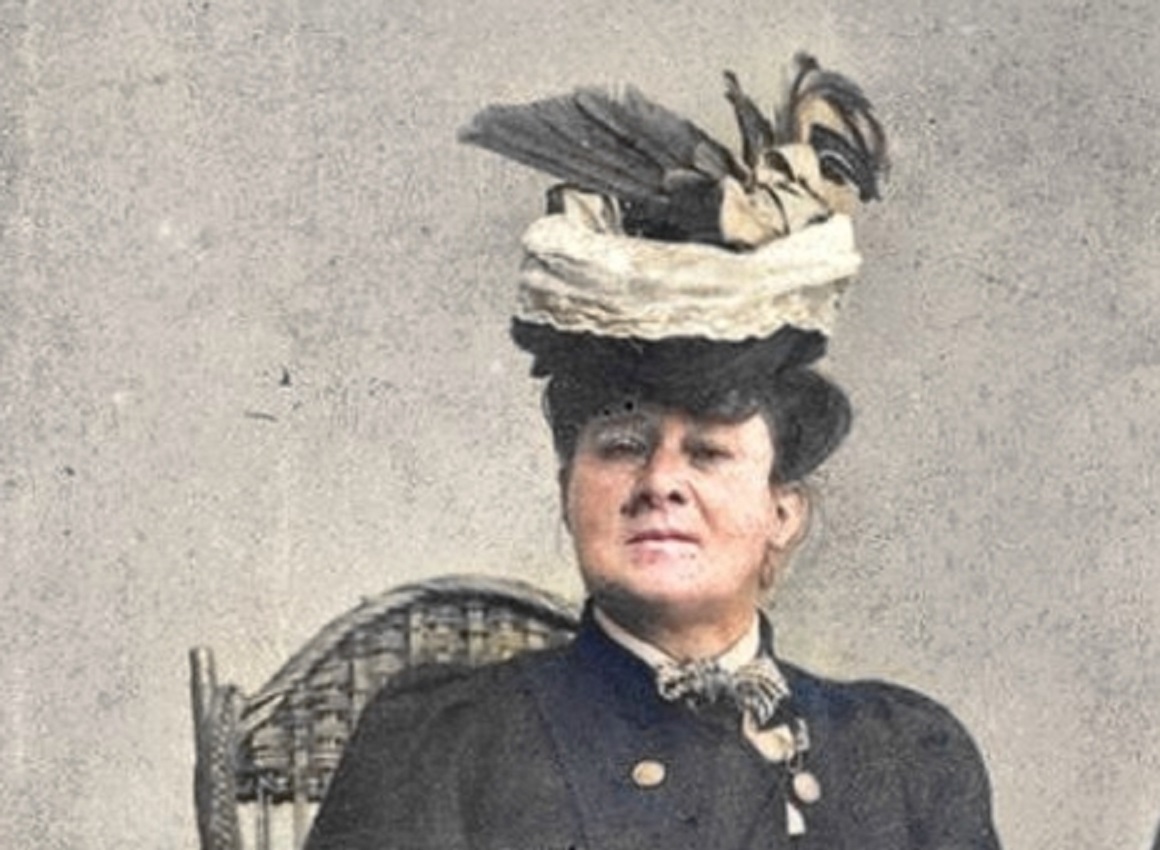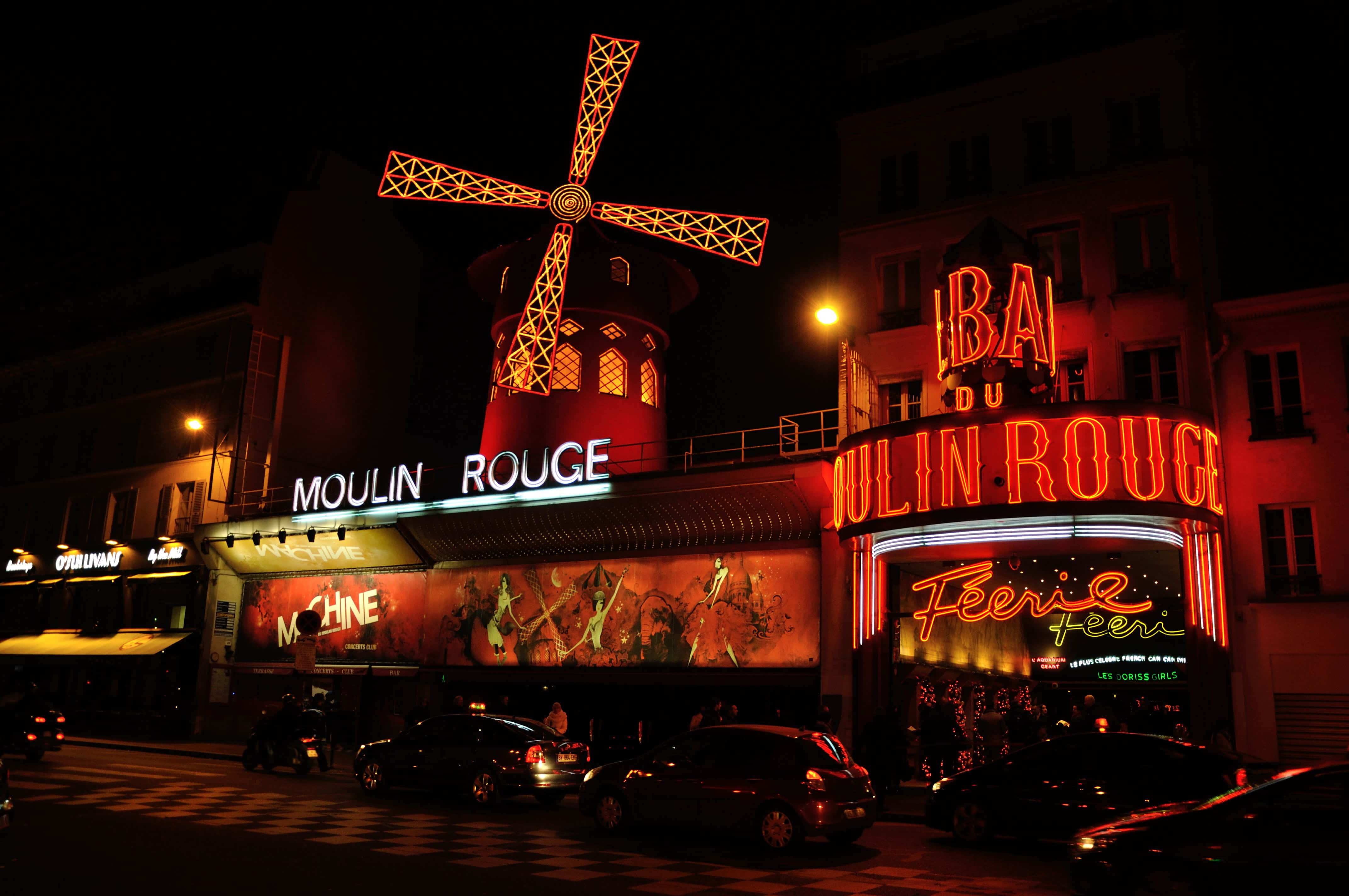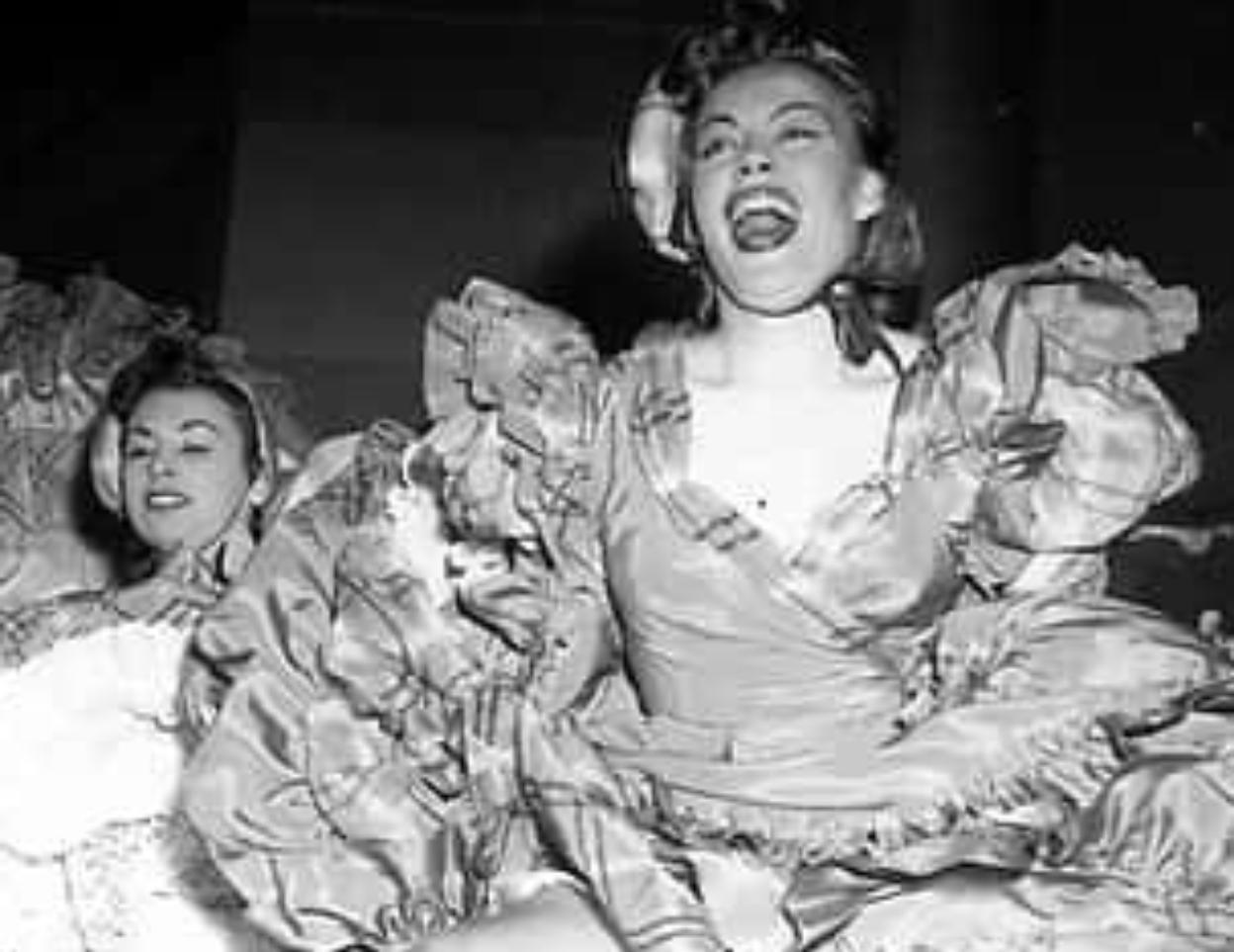In picturing the Moulin Rouge, you're picturing Paris. The decadence, the sensuality, the class, the fun, and the lights are all a part of what the Moulin Rouge is about and were all a large part of its immense influence over the City of Light at the turn of the 19th century. With such a storied history, there are some wild tales about the venue, so let’s take a look at some of the most interesting facts about this classic house of style and debauchery.
1. Boujee Burlesque
Opening at the foot of Montmartre Hill in the Jardin de Paris in 1889, on October 6th to be exact, Moulin Rouge means "Red Mill" in English. It was opened to give men with money a place where they could fashionably act like they're in the slums. Because acting like you’re poor has always been cool for the bourgeois.

2. Founding Fathers
Founded by the Spanish businessman Joseph Oller and the French impresario Charles Zidler, the Moulin Rouge quickly became successful and they gave it the nickname “The First Palace of Women". The cabaret had a unique facade for its time, which included a Gothic style castle and a windmill, which was created in reference to Montmartre’s past as a village dotted with the structures.

3. Elephants and Opium
At the Paris Universal Exhibition of 1889, Oller and Zidler came across a monumental stucco elephant, which they bought and put on display in the garden cafe of the Moulin Rouge. The elephant was used as a magnificent opium den, filled with belly dancers, and costing only one franc.
4. The Job of a Mademoiselle
The Mademoiselles of the Moulin Rouge became celebrities. Despite what's often been portrayed in Hollywood movies, they did not have to sell their bodies in order to make a living, though they were highly skilled seductresses who glided across the cabaret as the life of the party, dancing as well as talking with all of the gentlemen in attendance.

5. Does The City Dream of Electric Buildings?
Interestingly enough, the Moulin Rouge was the first electric building in the city of Paris, and it’s electric powered facade would become an iconic image of the city over the next century.
6. Pivotal Year
1889 was a huge year for the city of Paris because, after centuries of conflict, the people there were finally free and open to develop a new culture. Not only was the Moulin Rouge opened, but the Eiffel Tower was also unveiled to the public. Ya, I'd call that a pretty big year!

7. FIRE!
On February 27th, 1915, the iconic Moulin Rouge building was lost in a fire. After burning to a crisp, the famed cabaret was shut down for six years, only to be reopened after WW1 had ended in 1921.
8. Longevity
Not only has the Moulin Rouge survived a catastrophic fire, it has also persevered through several economic crises and two world wars, and today it's over 120 years old.
9. World Record in Kicks
At the 125th anniversary of the Moulin Rouge, dancers broke the Guinness World Record for the most over-the-head leg lifts in the span of 30 seconds, with a remarkable 29. Then shortly after, a solo dancer managed to do it 30 times!


History's most fascinating stories and darkest secrets, delivered to your inbox daily.
10. Eye of the Beholder
If you want to see the Moulin Rouge through the eyes of the one and only Henri de Toulouse-Lautrec, you can head on over to the Art Institute of Chicago to see his famous painting At the Moulin Rouge. Painted between the years of 1892-1895, it depicts customers hanging out and drinking, and the Mademoiselles preparing themselves for the evening. The painting includes Toulouse-Lautrec himself and the celebrated dancer La Goulue.
11. Stars of the Paintings
At the Moulin Rouge is not the only of Toulouse-Lautrec’s paintings of the famed dancehall, as he painted many more, which often included La Goulue and the male star Valentin “No-Bones” le Désossé.
12. The Queen
La Goulue’s real name was Louise Weber, and she was also known as the Queen of Montmartre.
13. Fate
La Goulue got started early—her mother worked in a laundry, and she developed a habit as a child of dressing up in customers' dresses. At the age of 16, she began working alongside her mother and got greater access to dresses, which she used to her advantage as she started going out dancing in the "borrowed" dresses of customers behind her mother’s back.
 Unknown Author, Wikimedia Commons
Unknown Author, Wikimedia Commons
14. Moving On Up
After meeting No-Bones, a booze merchant who danced on the side, La Goulue and he began dancing together and eventually landed a gig at the newly opened Moulin Rouge. In no time, the couple became staples of the cabaret, and Weber was booked permanently due to the widespread popularity gained with her audacious behavior.
15. Can You do the Can-Can?
The can-can was still developing by the time that Weber got around to using it at the Moulin Rouge, and she quickly became synonymous with the iconic dance.
16. Kicking Heads
The kick of the can-can also served a practical purpose: it was used as a warning shot to men who were overstepping their boundaries and perhaps touching places where their hands should not have been wandering.
17. High Earner
Louise Weber gained incredible success as “La Goulue,” and she worked herself up to be the highest paid entertainer in all of Paris during her time at the Moulin Rouge.
18. Start-Up
In 1895, right at the height of her popularity, Weber decided to leave the Moulin Rouge and start her own business in order to take full advantage of her popularity. Bad move. The business collapsed, her audience dried up, and she went down a spiral of depression and alcoholism, ending up selling peanuts, cigar, and matches as a street vendor.
 Unknown Author, Wikimedia Commons
Unknown Author, Wikimedia Commons
19. For the Prince
One of La Goulue’s most famous stories involves royalty—during one performance, she recognized that Edward VII, who at that time was still the Prince of Wales, was in the audience, and with her leg high in the air and her head buried in her skirt, she bellowed: “Hey, Wales, the Champagne’s on you!”
20. New Star Steps Up
Jane Avril, born Jeanne Beaudon, was another highly popular Moulin Rouge dancer at the turn of the 19th century, and after the departure of La Goulue, she became the cabaret's new headliner. With massive shoes to fill, Avril developed her own graceful personal style of crowd seduction, in contrast to Weber’s more boisterous persona, and soon became widely adored.
21. Explosive Nickname
Jane Avril gained the nickname of La Mélinite, the name of a kind of explosive, due to her ability to wildly kick around, contorting her body into positions of all kinds with sudden, dramatic movements.
22. Tough Beginnings
Jane Avril almost didn’t make it to the top. As a child, she was abused, ran away from home, and was then admitted to a hospital for her “female hysterics". It was dance that saved her though, as she was able to use it to better her life, saving her from the hospital and suicidal thoughts.
23. Legacy Living On
Jane Avril has been portrayed in both of the Moulin Rouge films: first by the illustrious Zsa Zsa Gabor and then by the charming Nicole Kidman, though Kidman's character was part-fictionalized and had her name changed to Satine.
24. Brutal Role
While playing the the semi-fictional Satine in the 2001 Academy Award-nominated Moulin Rouge!, Nicole Kidman seriously got put through her paces by breaking a rib not once, but twice! One time she fell down a flight of stairs and another time she cracked a rib while trying on a corset. If that wasn't enough, she also injured her knee during filming. Talk about suffering for your art!
25. Altering the Film
As a consequence of these injuries, Kidman had to film the scene where her character utters the line “A real actress” from the seat of a wheelchair. Many scenes had to be shot from the waist up, the filming was actually not finished on time, and production eventually had to be secretly moved to Madrid. The injuries sustained by Kidman also led to her being dropped from the lead role in David Fincher’s film Panic Room.
 The Film Experience
The Film Experience
26. Pushed Out
The film had to finish filming in Madrid because production had been delayed and they ran out of time on set in Australia. This wouldn’t have been a huge problem if it wasn’t one of George Lucas's producers. Lucas was set to shoot Star Wars Episode II: Attack of the Clones, and the producer refused to allow Luhrmann to continue filming after his studio time had expired.
27. Diamond Studded
Nicole Kidman may have broken her body down for the role, but at least she got to wear the most expensive piece of jewelry ever produced for a film. The necklace she wears in Moulin Rouge! was made out of 1,308 diamonds and a 2.5-carat sapphire clasp, and is worth $3 million. Not bad for a prop!
 Fashion Gone Rogue
Fashion Gone Rogue
28. More Than Just Legs
The portrait in most minds of a Moulin Rouge dancer is a beautiful, slim woman moving her legs up in a can-can dance. However, the famed Moulin Rouge also auditions men, though the selection standards for men are less rigorous.
 Moulin Rouge
Moulin Rouge
29. Male Qualifications
All the dancers at the Moulin Rouge need a high-level background in classical and modern jazz dancing, but on top of that, all that's required for men to get the part is a muscular body over 185cm and a personality which can radiate beyond the stage. Okay, okay, maybe it’s not THAT easy.
 Moulin Rouge
Moulin Rouge
30. Modern Retelling
Modern shows are called “revues,” and they consist of many different scenes spanning an entire evening in which the audience is entertained while enjoying fine dining. There are up to 80 artists performing in each show and it has taken on the role of a great tourist attraction, giving a glimpse of the venue's acclaimed history by retracing the story of the iconic cabaret in each number.
31. More Than Dance
The Moulin Rouge hasn’t just been a venue for dance, but for all entertainment. Over the years, legendary singers such as Edith Piaf and Frank Sinatra have performed at the theater.
32. Can’t Can’t
It shouldn’t be surprising to learn that the can-can was quite scandalous for its day and though it was not unlawful, people were sometimes detained for performing it. I feel like Kevin Bacon might have had something to say about that. Footloose, 1984, Paramount Pictures
Footloose, 1984, Paramount Pictures
33. Feathers Galore
The Moulin Rouge requires the use so many feathers for their performance costumes that they own their own feather company that's housed inside the theater.
34. Commitment to Character
John Leguizamo got the role of his career as Toulouse-Lautrec in Moulin Rogue! While it brought him great success and widespread acclaim, it cost him a bit of his body. In order to portray Touluse-Lautrec's diminutive stature, Leguizamo had to wear special leg braces. After filming, he had to go through years of physical therapy to return his knees and back to proper shape.
35. Ewan’s Part
It is difficult to imagine anyone but the dreamy Ewan McGregor in the starring role of Christian in Moulin Rouge!, but it almost didn’t happen. Leonardo DiCaprio was good friends with Baz Luhrmann and really wanted the part, so he auditioned. Let’s just say it didn’t go very well, as, believe it or not, Leo can’t sing whatsoever. Jake Gyllenhaal and Heath Ledger, both highly skilled singers, were also considered for Christian before Ewan landed the part.
36. All The Vices
Part of the Moulin Rouge’s allure was that is was one of the only places where one could go to drink booze and do opium. Add in the fact that there were beautiful women parading around the place, flirting with the male customers, and bam! you’ve got a successful business.
37. Clowning Around
Taking her name from a progenitor dance of the can-can—the “chacut”—Cha-U-Kao was one of the most popular performers at the early Moulin Rouge. Cha-U-Kao was a clown who riled up crowds and became beloved for her chaotic performances. She fascinated Toulouse-Lautrec, who found her inspiring due to the fact that she chose to entertain in a male-dominated profession while she herself was openly gay.
38. Top of the Top
While La Goulue went on to become the highest paid entertainer in Paris during her time at the Moulin Rouge, she ain’t got nothing on Mistinguett, another Moulin Rouge performer who, for a time, was the highest paid female entertainer in the entire world.
39. Rich Legs
One of the most famous entertainers of the 20th century, Mistinguett was the stage name of Jeanne Florentine Bourgeois. Mistinguett was a large part of the Moulin Rouge’s revival and success when it reopened after the fire. At the height of her popularity, she had her legs, her risqué weapon of choice, insured for 500,000 francs.
40. Operetta House
Known for its cabaret, the Moulin Rouge was also a luxurious palace of operetta for many years after its first renovation in 1903, which transformed the venue into an extravagantly comfortable venue, unlike anything else in the world at the time. The architect responsible for carrying out the renovations was the renowned Édouard Niermans, the man behind the most “Parisian” architecture of La Belle Époque—the period of peace, optimism, prosperity, and innovation in France between the Franco-Prussian battle and the WW1.
41. Chug, Chug, Chug
Meaning “The Glutton,” La Goulue acquired this nickname due to her trademark move of dancing past people's tables in the Moulin Rouge, quickly picking up their glasses, downing them, then moving on to another table.
42. Signature Move
Another one of La Goulue’s famous moves was to swirl her dress around, show off a heart she had stitched into her panties, and then kick her legs up high in order knock off a man’s hat.

43. Culture Capital
Montmartre became the bohemian heart of Paris after the opening of the Moulin Rouge, and the small town inspired much of the broader city's culture. One of the great events of Montmartre was the Bal des Quat’z’Arts, which was an annual costume festival modelled after the celebration of Carnival. For many years, the annual celebration took place at none-other than the legendary Moulin Rouge.
44. Controversial Parties
The second Bal des Quat’z’Arts was held at the Moulin Rouge in 1893 and led to a good amount of controversy. The carnival got real crazy, and by its peak there were undressed women littered throughout the venue being painted on as live paintings. A well-known model named Sarah Brown was detained and subsequently fined for misconduct. Her arrest led to one of the largest student riots in the history of Paris.
It's also been suggested that she too is an inspiration for Nicole Kidman's Satine in Moulin Rouge!
45. Kid Friendly
In order to maintain a PG-13 rating for the 2001 Moulin Rouge!, the dancers didn’t perform their can-can with historical accuracy—meaning they didn't explicitly expose their private things under their skirts. The pantaloons that the real dancers would have worn were open across the front, so those high kicks would have shown even more than you'd think.











































